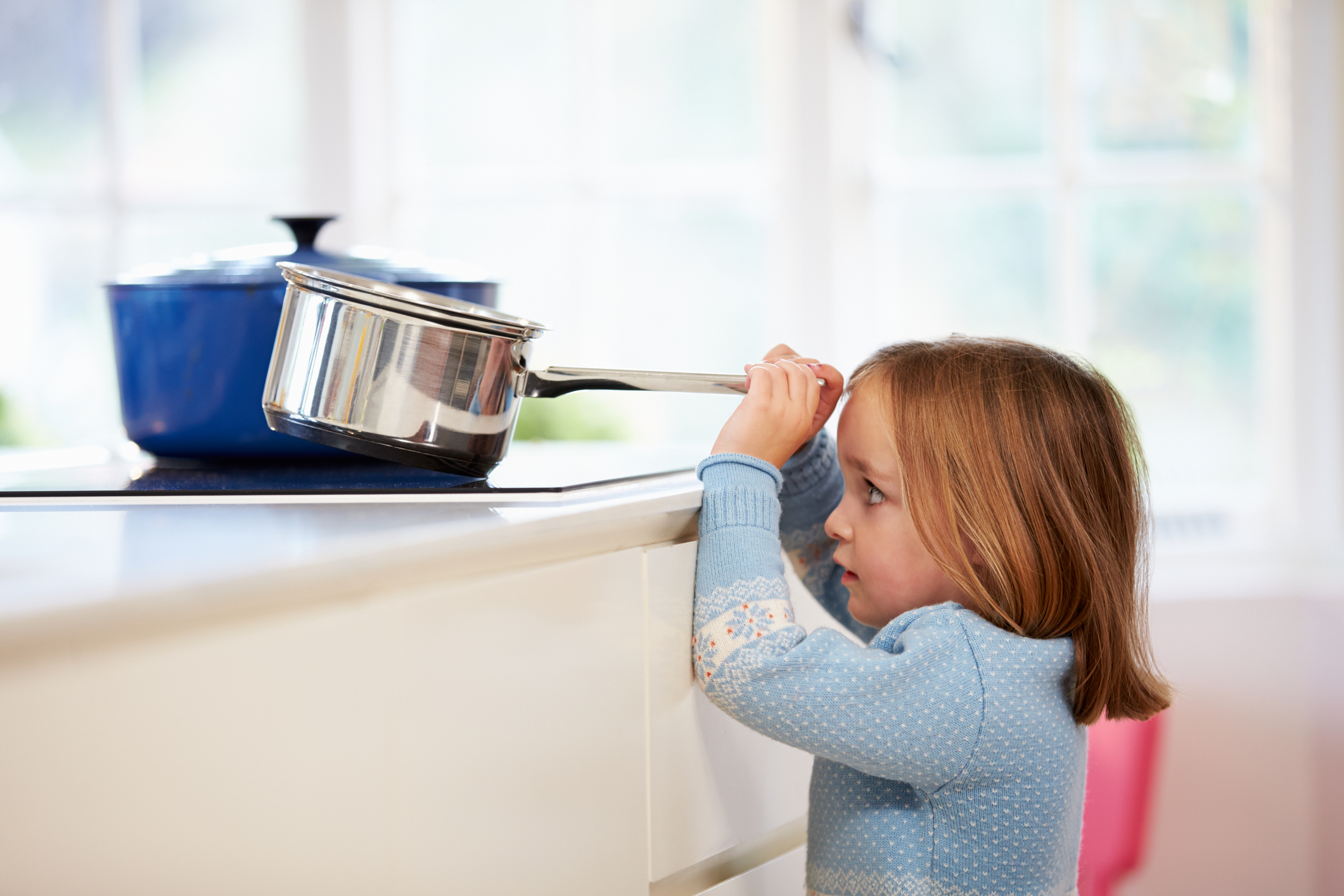It is crucial that you know how to prevent burns in the household and treat them if they happen. Small children are most vulnerable to burns because they don’t normally understand the traps and household dangers that can cause injuries. And children are natural explorers. They love to touch things, from pots and pans to rags and electric cords, that they shouldn’t touch. What can you do?
-Make sure children know their own body limits. Three feet is typically the safest distance for children to be away from a stove burner or oven element. If children will play with fire outdoors, make sure there is adult supervision at all times (even if it’s just nearby). Teach them about fire safety before they reach this age.
Even though children understand certain dangers-dogs, cars, even guns-they often don’t recognize the burn hazards in the home as easily as adults do. As they get older children become more aware of these dangers but what many parents don’t realize is that children are still children and all children should be talked to about these dangers no matter what their age.

Also read: Campfire Sleep is Commonly Used Children Burn Treatment Device
Simple tips parents can share with children:
- Never touch a hot pan or pot on the stove. The longer children wait, the more time heat has to continue to build up inside it increasing scalding danger. The intense pain children will experience from touching a hot pan or pot comes from sudden water vapor bubbles that form when moisture in the skin meets superheated metal. A parent’s reminder to handle pans with oven mitts is only effective if children have been taught about this safety tip in advance and usually, they have not even thought of it yet. Instilling this safety knowledge as early as possible is one-way children can learn to avoid accidental burns.
- Make children aware of the hazards around them and teach them how to avoid them. Teach children to never play with matches, but if they do accidentally start a fire, show children how to use water from the sink or hose outside (if safe) so that they put it out quickly. Let children know about electricity and teach them not to go near power cords or wires. They should also know that no dangling jewelry is safe when playing on playground equipment since their necklaces may become caught around a moving part. Electric blankets and similar heaters should have an automatic shutoff switch in case children climb on top of them or pull on the loose electrical wire that could children burned if they come in contact with it.
- Teach children what to do if another child is burned, never to rub the burn or try putting water on it. The best way children can help is by first calling an adult for assistance and then following instructions given by that adult so that anybody’s fluids from their own hands don’t add to the injury.
Children who are burned should have a parent check their burns as soon as possible. Children who are burned severely enough to require medical attention will often also require follow-up care and children may need parental support while they are at the doctor’s office or hospital since children may be frightened when they see blood and injured bodies of other children.
Parents understand how crucial this knowledge is to children’s safety and children learn this information best when parents show them first hand about burns, not just lectures.


 Home
Home










